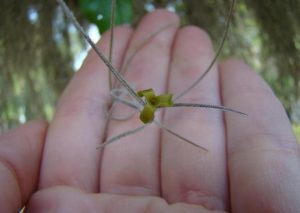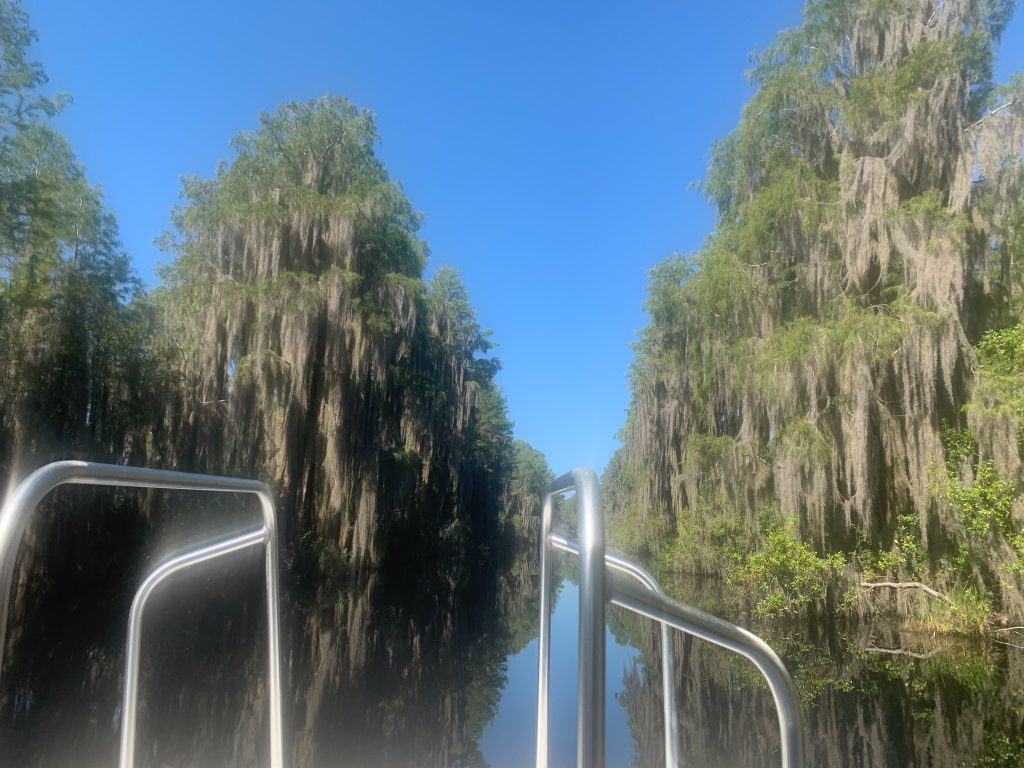Nature’s Symphony
Unplugging in the wild is a breath of fresh air. Have you ever spent time paddling a wilderness trail, exploring the depths of the swamps, rivers, and marshes? A silence from our busy lives becomes supplanted with a harmony of nature. Aldo Leopald described these sounds as a symphony of nature, specifically when describing the Okefenokee Swamp. “The gentle beating of wings, the sound of wind passing through the long grass. The silence of the deer among the underbrush and what it meant to the human spirit. The Okefenokee Swamp is nothing short of a symphony. And those who come to hear it will have it echoed in their hearts forever after.”
The Okefenokee Swamp forms the headwaters of the St Mary’s and Suwannee Rivers. The name “Okefenokee” translates into “land of trembling earth,” which relates to the swamp’s unique peat deposits. This blackwater swamp comprises a diverse collection of flora and fauna that continually goes through a unique cycle, which includes fire. The swamp was originally home to the Swift Creek Culture, but other indigenous groups and explorers lived in the Okefenokee Swamp until the mid-1800s when early pioneers began to settle the landscape. In 1937, FDR established the Okefenokee Swamp as a National Wildlife Refuge due to its natural significance to migratory birds and other wildlife.
Spanish Beard
Swaying in the winds of Okefenokee Swamp, draping the branches of trees is one important component of the swamp – Spanish Beard, better known as Spanish Moss. There are many stories as to how the common name for Tillandsia usenoides evolved. Different indigenous groups referred to Spanish Moss as “Tree Beard,” but French Explorers would call it “Spanish Beard” because of the beards of Spanish explorers. The same soon changed to “Spanish Moss” and the common name stuck.
Pineapples and Spanish Moss?
What is Spanish Moss? Despite its name, it is not a moss but a type of plant. Specifically, it is an epiphytic bromeliad. An epiphyte is a plant that grows on other plants and gets all its nutrients and water in the air, rain, or water by use of “trichomes. Bromeliads are a specific plant family. The most well-known bromeliad is also a controversial pizza topping – pineapple. Yes, Pineapples and Spanish Moss are closely related.
As you travel through the Okefenokee Swamp like other places throughout the Southeast United States, trees and other plants are draped with Spanish Moss. Like many other bromeliads, the Spanish Moss reproduces by seed or pups. Despite its thin, wispiness, it may be difficult to see, but Spanish Moss has flowers, too. Spanish Moss plays a significant role in our environment. Many birds, such as orioles and warblers, and other wildlife utilize it for building their nests. Giant clumps of Spanish Moss may also provide important shelter to bats.

Spanish Moss and its Misconceptions
Spanish Moss serves as a valuable indicator plant within our communities and natural areas. Its presence is dependent on air quality. As air quality declines, populations of Spanish Moss decline. Therefore, an abundance of Spanish Moss is an indicator of healthy, clean air. Nonetheless, Spanish Moss is a plant I refer to as a “Landscape Slimer” because it is viewed as a problematic plant.
Many people view it as a problematic plant that kills trees or plants, but that is not true. The biggest concern is weight – but the weight of Spanish moss has no impact on trees. We easily blame Spanish Moss for the tree’s decline because we see a dead tree covered in the plant. Spanish Moss isn’t causing the decline, rather, it is taking advantage of a declining tree canopy. As a tree goes into decline, its canopy begins to thin. Therefore, light can enter the canopy, creating the perfect environment for Spanish Moss to thrive. As a homeowner or property manager, when a tree is covered in Spanish Moss, don’t blame the plant, look for the other environmental conditions that are stressing the tree.
Spanish Moss – A Part of the Symphony
From the towering cypress trees to the lowly lichen clung to its trunk or the Spanish Moss lazily aloft in the wind, our environment is a symphony. The balance of systems and functions is dependent on one another. These symphonies are not restricted to our natural areas either, they are characterized in every portion of our natural and built environment. Spanish Moss, a unique epiphytic bromeliad is part of that symphony and a part of our landscapes.

More Information:
UF/IFAS Extension Nassau County
UF/IFAS Extension Blogs – Taylor Clem
Social Media:
 1
1
